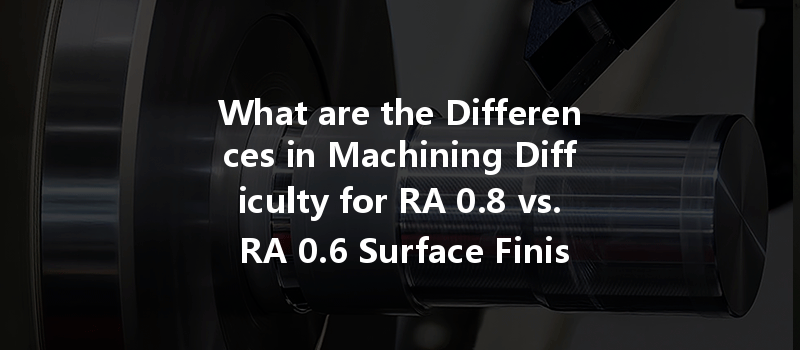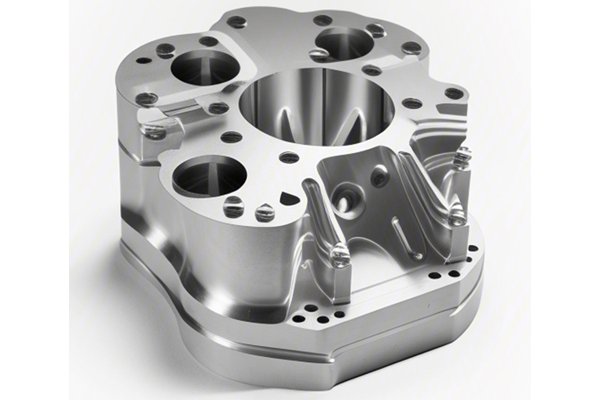Have you ever wondered what makes one surface finish more difficult to achieve than another? If you’ve dipped your toes into the world of CNC machining, you’re probably familiar with the terms RA 0.8 and RA 0.
The Art and Science of Surface Finishing
When we talk about surface finishes in CNC machining, we’re touching on a crucial aspect of manufacturing that often gets overshadowed by more glamorous topics like speed and efficiency. But let me tell you, good surface finish can be the golden ticket that elevates a part from mediocre to magnificent.
Imagine you’re in a restaurant. Do you order the meal that looks like it’s been slapped on the plate without any care, or the one that looks beautifully arranged? Similarly, surface finish impacts the presentation and functionality of your machined parts. It’s not just about looks though—it’s about performance, durability, and how well the part fits in its intended application.
What Do RA 0.8 and RA 0.6 Mean?
Before we dive deeper, let’s unpack the numbers. RA stands for “Roughness Average,” a standard measurement used to quantify the surface texture of a machined part. A lower RA value means a smoother surface, while a higher RA value indicates more roughness. So, RA 0.6 is smoother than RA 0.
Why Does Surface Finish Matter?
Let’s get into the “why” of surface finish. Many industries, including aerospace, automotive, and medical devices, require tight tolerances and high-quality surface finishes. Parts with smoother finishes usually exhibit:
So, let’s get real for a minute. Is it always necessary to aim for the lowest RA number possible? Not necessarily! Sometimes that precision can be overkill. In some cases, a lighter finish suffices while keeping production costs down.
The Challenge of Complex Parts
When it comes to machining complex parts, the task becomes even more intricate. Imagine trying to paint a detailed scene on a tiny, intricately carved statue. The complexity makes every brushstroke critical, and one wrong move can ruin the entire piece. The same principle applies to machining; the more complex the geometry, the more challenging the machining process becomes.
Complex shapes can often have tight radii, deep cavities, and intricate features that are trickier to access with tooling. Achieving a consistent, fine finish across all surfaces becomes a bit like solving a puzzle with thousands of pieces, each of which has its own quirks and requirements.
Shaping Machining Methods
CNC machining has several techniques to achieve desired surface finishes. If you’ve ever tried to cook a recipe differently than the chef intended, you know things can go off the rails fast. Here’s a quick look at some common methods and how they affect the surface finish:

Comparing RA 0.8 and RA 0.6 in Complex Parts
Here’s where we get down to brass tacks. The difference between the two finishes might seem minor, but it’s essential to understand their practical implications in complex machining.
Real-World Applications
To solidify our understanding, let’s consider a couple of examples where the differences in these finishes come to play.
Tips for Achieving the Right Finish
Now that we’ve thoroughly dissected the differences and applications, how can you tackle achieving the right surface finish for your complex parts? Here’s some pro-level advice:
Conclusion
In the world of CNC machining, RA 0.8 and RA 0.6 are more than just numbers; they represent a spectrum of challenges and possibilities for precision manufacturing. Understanding these differences can guide your decisions, influencing not just the quality of your work but the efficacy of your production processes as well.
By weighing factors like tool selection, setup times, and application requirements, you’ll find the surface finish that meets your needs without breaking the bank or your sanity. So, the next time you’re faced with a machining challenge, remember—sometimes smooth sailing sets you up for success!
Happy machining! If you have any questions or want to dive deeper into specific topics, feel free to leave a comment. The world of CNC machining is vast, and I’m here to help you navigate through it!






